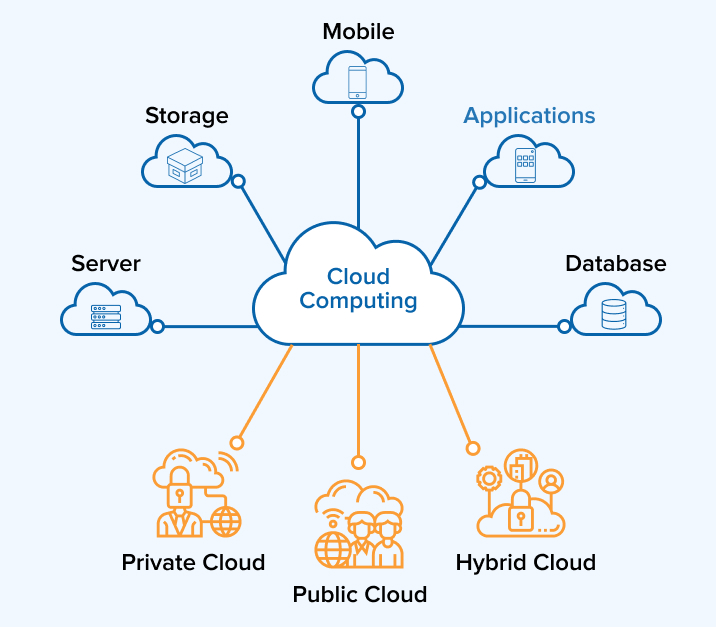Most Recent Cloud Services Press Release: Innovations and Sector Updates
Most Recent Cloud Services Press Release: Innovations and Sector Updates
Blog Article
Achieve Seamless Scalability With Cloud Solutions
In the ever-evolving landscape of cloud services, accomplishing seamless scalability stands as a keystone for modern services seeking to remain competitive and versatile. The mission for smooth scalability with cloud solutions introduces a globe of opportunities for those prepared to welcome the transformative power of dynamic source management.
Benefits of Cloud Scalability
Cloud scalability provides organizations the flexibility to dynamically adjust resources based upon demand, ensuring optimal efficiency and expense performance. One essential benefit is the ability to scale sources up or down promptly in feedback to varying work. This agility makes it possible for services to meet altering customer demands without over-provisioning sources, ultimately leading to set you back financial savings. Scalability likewise boosts performance by ensuring that systems can take care of enhanced traffic or workload without experiencing downtime or slowdowns. By effectively allocating sources, organizations can keep high levels of efficiency throughout peak times without unnecessary expenses throughout quieter periods. Furthermore, cloud scalability advertises innovation and trial and error by enabling businesses to quickly check originalities and range them as needed. This adaptability motivates a culture of continuous renovation and adjustment, making it possible for organizations to remain competitive in a rapidly progressing market landscape. Ultimately, the benefits of cloud scalability extend past cost financial savings to incorporate better efficiency, agility, and development.
Key Functions for Scaling
Reliable scaling in cloud solutions counts on key features that enable organizations to readjust sources dynamically based on need. One more crucial attribute is scalability, making it possible for systems to deal with raised workload by including sources perfectly. Overall, these crucial features jointly empower companies to attain seamless scalability in cloud solutions.
Implementing Auto-Scaling Techniques
To properly optimize resource allowance and adapt to differing work, organizations have to strategically carry out auto-scaling strategies in their cloud solutions facilities. Auto-scaling enables systems to automatically readjust the variety of calculate sources based on real-time demand. There are numerous auto-scaling approaches that companies can utilize, such as predictive scaling, which uses historical data to forecast future source demands, and reactive scaling, which reacts to present workload changes.

Finest Practices for Scalability
For companies aiming to improve their scalability in cloud solutions, carrying out best techniques is essential for optimal efficiency and source monitoring. One trick best practice is designing applications with a microservices design. This approach breaks down applications into smaller sized, independent services that can be released, updated, and scaled independently, enabling greater adaptability and scalability.
An additional essential practice is utilizing containerization technology, such as Docker or Kubernetes. Containers allow the packaging of applications and their reliances right into isolated devices, making it much easier to scale parts individually and deploy them consistently throughout different atmospheres.
In addition, applying automated implementation and facilities as code (IaC) can streamline scalability efforts (linkdaddy cloud services). Automation devices like Terraform or Ansible help in provisioning and managing resources successfully, web minimizing hands-on errors and allowing quick scalability
Moreover, keeping track of performance metrics, setting up notifies, and performing normal ability preparation are vital techniques to make sure aggressive scalability administration. By sticking to these best practices, companies can attain seamless scalability in their cloud solutions while enhancing efficiency and source use.
Tracking Efficiency Metrics
When assessing the performance of cloud solutions scalability, closely keeping an eye other on performance metrics is critical for making sure optimum performance and resource allotment. By continually tracking vital efficiency indicators (KPIs) such as action times, source, latency, and throughput use, organizations can gain valuable insights into the health and wellness and performance of their cloud infrastructure. Monitoring performance metrics enables for the early detection of potential traffic jams or issues that might affect scalability, allowing aggressive measures to be required to resolve them before they rise.

Conclusion
Finally, attaining seamless read the full info here scalability with cloud solutions is important for organizations to enhance performance, boost development, and maintain high efficiency levels throughout peak times. By leveraging the benefits of cloud scalability, implementing auto-scaling approaches, using key features such as elasticity and automation, and complying with ideal practices like application design and performance tracking, services can successfully scale their systems while making the most of resource usage and efficiency.
The mission for smooth scalability with cloud services reveals a world of opportunities for those willing to accept the transformative power of dynamic source administration.
Cloud scalability uses companies the flexibility to dynamically adjust resources based on need, guaranteeing optimum efficiency and cost effectiveness. An additional crucial function is scalability, enabling systems to handle boosted workload by including sources effortlessly.For companies intending to improve their scalability in cloud solutions, carrying out best methods is vital for optimal efficiency and resource monitoring.When examining the effectiveness of cloud solutions scalability, carefully keeping an eye on efficiency metrics is necessary for making sure optimum functionality and resource allotment.
Report this page